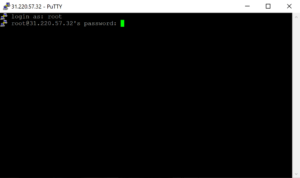
Linux Alias: Create custom shortcuts for your regularly used commands
Alias is a package in Linux that allows users to create custom shortcuts for their regularly used commands. It provides a way to simplify complex or frequently used commands by assigning them a shorter and more memorable name. This can greatly improve productivity and efficiency when working with the command line interface.
Alias is primarily used in the Linux command line interface, but it can also be used in other Unix-like operating systems such as macOS. It is a built-in feature in most Linux distributions, so there is no need to install any additional packages.
Alias is written in the C programming language, which is known for its efficiency and low-level system access. This allows Alias to be fast and lightweight, making it suitable for use in resource-constrained environments.
How to Install Alias on Supported Operating Systems
Alias is a built-in feature in most Linux distributions, so there is no need to install it separately. It is available out of the box and can be used immediately.
Commands Examples
Here are some examples of how Alias can be used to create custom shortcuts:
-
- Create an alias for the ‘ls’ command:
alias ll='ls -l'
This creates an alias ‘ll’ for the ‘ls -l’ command, which lists files and directories in long format.
-
- Create an alias for changing to a specific directory:
alias cddocs='cd /home/user/Documents'
This creates an alias ‘cddocs’ for the ‘cd /home/user/Documents’ command, which changes the current directory to the ‘Documents’ directory.
-
- Create an alias for a complex command:
alias gitpush='git add . && git commit -m "Commit message" && git push'
This creates an alias ‘gitpush’ for a complex Git command that adds all changes, commits them with a specified message, and pushes them to the remote repository.
Similar Packages and Benefits
There are several similar packages to Alias that serve the same purpose of creating custom shortcuts for regularly used commands. Some popular alternatives include:
- Shell functions: Instead of using aliases, shell functions can be defined in shell scripts or configuration files. They provide more flexibility and can include complex logic.
- Shell scripts: Instead of using aliases, shell scripts can be created to encapsulate a series of commands. They can be executed as standalone scripts or sourced into the current shell environment.
- Command-line tools: There are also standalone command-line tools available that provide similar functionality to Alias. These tools often have additional features and options for managing and organizing aliases.
The benefits of using Alias or similar packages include:
- Improved productivity: By creating custom shortcuts for frequently used commands, users can save time and effort by typing shorter and more memorable commands.
- Reduced typing errors: Alias can help reduce typing errors by providing a shorter and more intuitive command syntax.
- Consistency: Alias allows users to define a consistent naming convention for their commands, making it easier to remember and use them consistently.
- Automation: Alias can be used in scripts and automation workflows to simplify complex commands and make them more readable.
Example Scripts
Here are three example scripts that demonstrate the use of Alias in automation:
Script 1: Backup Script
#!/bin/bash
# Alias for backup command
alias backup='tar -czvf backup.tar.gz /path/to/backup'
# Perform backup
backup
This script creates an alias ‘backup’ for the ‘tar -czvf backup.tar.gz /path/to/backup’ command, which creates a compressed backup of a specified directory. The alias is then used to perform the backup.
Script 2: Deployment Script
#!/bin/bash
# Alias for deployment command
alias deploy='rsync -avz /path/to/source/ user@remote:/path/to/destination'
# Perform deployment
deploy
This script creates an alias ‘deploy’ for the ‘rsync -avz /path/to/source/ user@remote:/path/to/destination’ command, which synchronizes a local directory with a remote server. The alias is then used to perform the deployment.
Script 3: Git Workflow Script
#!/bin/bash
# Alias for Git workflow
alias gitworkflow='git add . && git commit -m "Commit message" && git push'
# Perform Git workflow
gitworkflow
This script creates an alias ‘gitworkflow’ for a complex Git workflow that adds all changes, commits them with a specified message, and pushes them to the remote repository. The alias is then used to perform the Git workflow.
List of Possible Functions or Constants
| Function/Constant | Description |
|---|---|
| alias | Defines an alias for a command |
| unalias | Removes an alias |
| alias -p | Lists all defined aliases |
Conclusion
Alias is a powerful tool in the Linux command line interface that allows users to create custom shortcuts for their regularly used commands. It is widely used by developers, system administrators, and power users to improve productivity and efficiency. By creating shorter and more memorable command names, Alias simplifies complex commands and reduces typing errors. It can be used in various automation workflows and is a valuable tool for managing and organizing commands.

This article incorporates information and material from various online sources. We acknowledge and appreciate the work of all original authors, publishers, and websites. While every effort has been made to appropriately credit the source material, any unintentional oversight or omission does not constitute a copyright infringement. All trademarks, logos, and images mentioned are the property of their respective owners. If you believe that any content used in this article infringes upon your copyright, please contact us immediately for review and prompt action.
This article is intended for informational and educational purposes only and does not infringe on the rights of the copyright owners. If any copyrighted material has been used without proper credit or in violation of copyright laws, it is unintentional and we will rectify it promptly upon notification. Please note that the republishing, redistribution, or reproduction of part or all of the contents in any form is prohibited without express written permission from the author and website owner. For permissions or further inquiries, please contact us.


